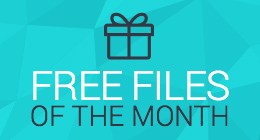Once a lead clicks on the call to action to obtain your offer they very often will end up on a landing page. This is where someone lands after clicking on your call to action. It could have been to download a white paper, start a free trial, or join a mailing list. If category pages are designed to be a type of organic search attractor, full of keyword-rich content, then landing pages are the equivalent for paid search results. Landing pages are created for targeted campaigns, either from print or online, and so they have a singular focus, and a strong call to action. In 2017 we will see a rise in landing pages due to their potential for marketing purposes and their ability to better target visitors.
Related: Influencer Marketing
How to create an effective landing page
Here are FIVE things to keep in mind to make sure you have a great landing page. Align your content with the offer and CTA, follow layout best practices, use personalization, track metrics and do usability testing.

Align your content with the offer and CTA
Let’s start with the content. Think about what first attracted your visitor. Stay focused on that offer. Keep the language concise and relevant, don’t overwhelm people with unnecessary information. Think about how you feel when you click to a landing page and there’s a bunch of information that you don’t want to read. To build trust you can also include testimonials or customer reviews about that offer. With the right content you can move on to layout best practices. Make your landing page consistent with your overall website, so it feels like one brand.
Visitors are unlikely to commit to a big action after just one page, so the landing page should summarize the information that people can use to make a decision, linking off to more detail from the page. You don’t know what level of detail people will need for each point you make on the landing page. Some will be happy with just the summary, others will need to drill deeper. Depending upon their prior knowledge, and how much research they’ve already done on other sites. See how similar this concept is to a regular category page? The only difference is that all the information on this page is aimed at getting visitors to check out the foucused contentthat’s related to the ad campaign and to the call to action.
Follow layout best practices for landing page design
We are sharing a few tips on how you can work to improve your landing pages. First adopt the mindset that website visitors don’t read, they scan. So, at a minimum, your important text should be easy to distinguish. Use formatting, headlines and bullet points,to keep content skimmable, while ensuring visitors are drawn to the most important points. Secondly, use the inverted pyramid structure with your copywriting. Conclusions come first, as this is your most important information.
Clearly display your sign up form, so people will fill it out. White space is your friend. Don’t use too many words and keep the page uncluttered. Use visual cues, such as arrows to guide people. Create a sense of urgency by using language such as sign up today or available only for a limited time. Use high quality images to demonstrate your product or service. You want to test different landing page tactics to understand what creates the best experience. Full-Screen Forms would mean no need to go to another page to fill out a form as the new websites are equipped with full-screen forms adapted to responsive design.
You also need to to make sure that the pages you link to from your landing page contain the same call to action as your landing page. That way, even if someone clicks through for more detail, they’ll still be reminded of your targeted offer. You may have heard of the concept of a promotional follow, where you draw visitors to one place, and focus them on the purchase process. Well, that’s all very well, but people won’t buy until they’ve learned enough about the product. Because your landing page could be the first they’ve ever seen of your offerings, it is unlikely that they’ll go straight ahead and order at this point.
Related: Design Communities to Join Today
Personalized landing pages as landing page examples
Print is a wonderful carrier of technology, but a recent study by Ovum determined that 74% of customers use three or more marketing channels for support. What that means is that you need to give your customers options, different ways to contact you or to research your products or services. Sure, they can go to your website, but why not direct them to a special page created just for them? GURL’s or generic URL’s lead all customers to one microsite or campaign page.It’s smart because if you just send them to your website how will you know how much traffic can be directly attributed to your promotion? With that said, a microsite doesn’t provide unique data specific to the visitor.
And that’s where PURL’s come into play. PURL’s, short for personalized URL’s or personalized landing pages. Are unique landing pages that are custom tailored to target a specific visitor.Indirect mail, a unique web address created just for them and usually containing their name and the address, is printed on the mail piece. For example, www.company.com/JaneDoe. The customer can go there, and begin to search and interact.
Meanwhile, directions during the visit provide detailed information for the marketer who’s tracking their behavior and deciding how to react. Marketers can see who visited, where they clicked, and how many pages they viewed. They can also see who initiated a transaction and left, details that can help determine which customers are more valuable or closer to a purchase. PURL’s can drive 20 to 40% more traffic than GURL’s can, but understand there’s more effort and expense involved in a PURL campaign. Much like variable data printing, PURL’s require afairly detailed comprehensive database to drive custom content.
Names and addresses alone won’t be enough to take advantage of the technology’s strengths.Steven Amiel of EasyPurl offers these four tips for PURL campaigns. Make sure the offer is visible on the page without scrolling. If the PURLl name is to long try using the customers first and last initials and two to three digits after the initials. For example, tw123 for Trish Rickowski.Don’t ask more than three to four survey questions without giving something back in return.And don’t put anything on the page that will drive your customer away from the site.

Providing a personalized and interactive page gives the customer another avenue to explore your brand and an opportunity to communicate. In return you get the benefit of generating valuable behavioral data while creating a memorable experience for the customer. From there, support the claim, and continue down, to your least important information.
Fourth, invest time in understanding what might detract a user, from engaging with your call to action. If visitors might claim the process is too difficult, work to drive awareness around how easy your process is. If visitors might have limited motivation, provide incentives that create a desire to act sooner, than later. If your visitors are highly engaged from the start, well, then get out of the way. If you know you made the sale, stop talking.
The next step in measuring the value of our keyword research and our marketing efforts is to look at the specific landing pages that people are finding. We’ve already grouped our visitors in terms of segments by looking at what words they searched on and then also the additional qualifying words that help me determine specifically what they were looking for. So If we know that someone is looking for a specific keyword, we are going to look at all those search phrases and then we want to look specifically at what they did.
Related: Killer SEO Web design
So Facebook, Twitter, Pinterest, they’re all going to have traffic driving to your site, and Google’s going to say, “These are the most popular destinations on your site.” In other words, the URLs that were shared in a pin, a tweet, a Facebook post, and so on. So this is really helpful to understand what some of your most popular social content is. You can see the page views for each of those sessions, along with that, session duration and even the pages per session so we can see that the top shared URL is just a direct URL to our site, but the next most popular URL is something really specific.

Because if people enter at this page and they don’t see any information about a specific keyword, we going to have a very high bounce rate. And we can troubleshoot from there. But what we want to look at from this point, is we’ll go into our analytics program. Or we’ll go to one the Web Master Tools programs. Which will show me which of our pages rank for this phrase. And so we can go into for this example, Bing’s webmaster tools. And we can see the traffic details for the landing page.
And we can see which keywords are sending visitors to that landing page. How many visitors each keyword sent. And then the click through rate, the bounce rate. And then we can start measuring the effectiveness of that key phrase for this specific content. To that page. Sometimes, we’ll find that it’s a good ranking, but it might be the wrong page. And so we’ll either need to change thatpage, or change our optimization to another page.
And focus our efforts on those pages, rather than the one that’s ranking already. Here are the questions that you need to ask. When you come to your analytics, in establishing the value of your landing pages. The first question, where did our visitors come from? Did they come from search? If they came from search, which keywords did they use? Did they come from a link? Are they direct visitor? Or a return visitor? Through either, directly accessing the site. Or through an email news letter.
Related: Business E-mail dying?
Number one where did the visitors come from, number two what did they see if they came from search well then which terms because only by looking at the term in the landing page. Will you be able to determine the intent and their expectancy and your ability to serve the right page. People coming from a link will go back and look at that link on the other website. Look and see what the text of the link is and then the context of that link on the other website.
That will tell you what the expectancy of the visitor is. On the page on your website. And then, what did they do? So, for people in our example looking for a specific niche. Did they book, did they bounce, or did they research? Did they engage with us in any way? So what did they do? The fourth question is, what was the result? Did we get the sale? Did we hit any of our engagement goals or any KPI goals? That way we know if we are going in the right trend or the wrong trend? And then finally, what’s it worth? What’s our bottom line? What is the visitor who searches for the keyword? What are they worth? We can then compare that to someone who is searching for that specific keyword and we can see by keyword segment where our value is. If we can see that we are growing our value in niche but we are not growing value in other niches.

And finally, consider introducing social proof. It’s in our nature to like what others like. So use this to your advantage. Call out real customer metrics, and real customer data. Prove to the visitor, that someone just like them, uses your product, or service, as well. That might suggest that people are really interested in it until you take a look at the average session duration. So there’s something wrong with this particular page. So we know that people want to look at that and share that content, but the people that are arriving on it are having trouble.
Great finds
- Migliori Casino Online
- Migliori Casino Senza Autoesclusione 2025
- Non Gamstop Casinos
- Casinos Not On Gamstop
- UK Casinos Not On Gamstop
- Casino Non Aams Legali
- Beste Online Casinos
- Slots Not On Gamstop
- Non Gamstop Casino Sites UK
- UK Casino Not On Gamstop
- Non Gamstop Casinos
- Casino Sites Not On Gamstop
- Best Non Gamstop Casinos
- Casino Non Aams
- Migliori Casino Non Aams
- Casino Not On Gamstop
- Casino En Ligne France
- UK Casinos Not On Gamstop
- Casinos Not On Gamstop
- UK Casinos Not On Gamstop
- UK Online Casinos Not On Gamstop
- Non Gamstop Casino UK
- Meilleur Casino En Ligne



![affwk08-mi-max_300x600PK-[C:G.Phon]](../ts/i3801839/tsv_amc_performance.Darazpk.206907.216621.82265_tst___TIMESTAMP__.jpg)